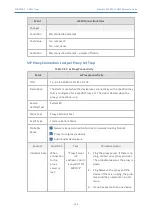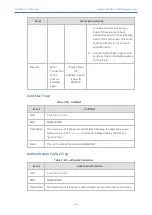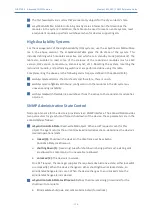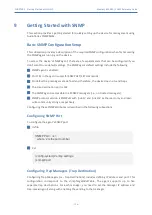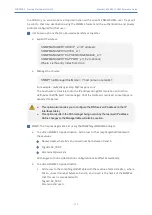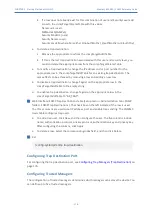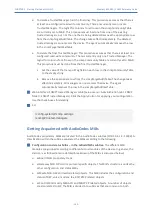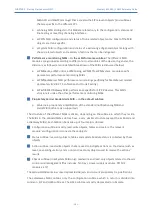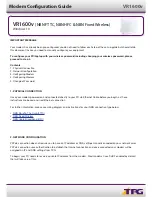
CHAPTER 9 Getting Started with SNMP
Mediant 800 SBC | SNMP Reference Guide
Traps and Alarms
The device supports standard traps and proprietary traps. Most of the proprietary traps are
alarm traps, that is, they can be sent and cleared. Thus, they are referred to as alarm traps. All
the standard traps are non-alarm traps, referred to as log traps.
The proprietary traps are defined under the acBoardTrapDefinitions subtree.
The supported standard MIB traps include the following:
■
coldStart
■
authenticationFailure
■
linkDown
■
linkup
■
dsx1LineStatusChange
■
rtcpXrVoipThresholdViolation
■
dsx3LineStatusChange
■
entConfigChange
This subsection describes the device’s configuration so that traps are sent out to user-defined
managers under SNMPv2c or SNMPv3. It continues with an explanation on the ‘carrier grade
alarm’ abilities and usage.
Device Configuration
For a device to send traps to specified managers, the most basic configuration are the trap
targets. More advanced configuration includes the Trap Community String or traps over
SNMPv3.
■
Destination IP address and port (see
Basic SNMP Configuration Setup
■
Trap Community String: The default Trap Community String is ‘trapuser’. There is only 1
for the entire device.
●
INI file: SNMPTRAPCOMMUNITYSTRING = <your community string here>.
●
SNMP: add a new community string to the snmpCommunityTable. To associate the
traps to the new Community String change the snmpTargetParamsSecurityName in
the snmpTargetParamsTable so it coincides with the snmpCommunitySecurityName
object. If you wish, you can remove the older Trap Community String from
snmpCommunityTable (however, it is not mandatory).
●
Web: SNMP Community Settings page (Setup menu > Administration tab > SNMP
folder > SNMP Community Settings). Use the Apply button to apply your
configuration. You can’t delete the Trap Community String, only modify its value.
●
CLI:
- 182 -

